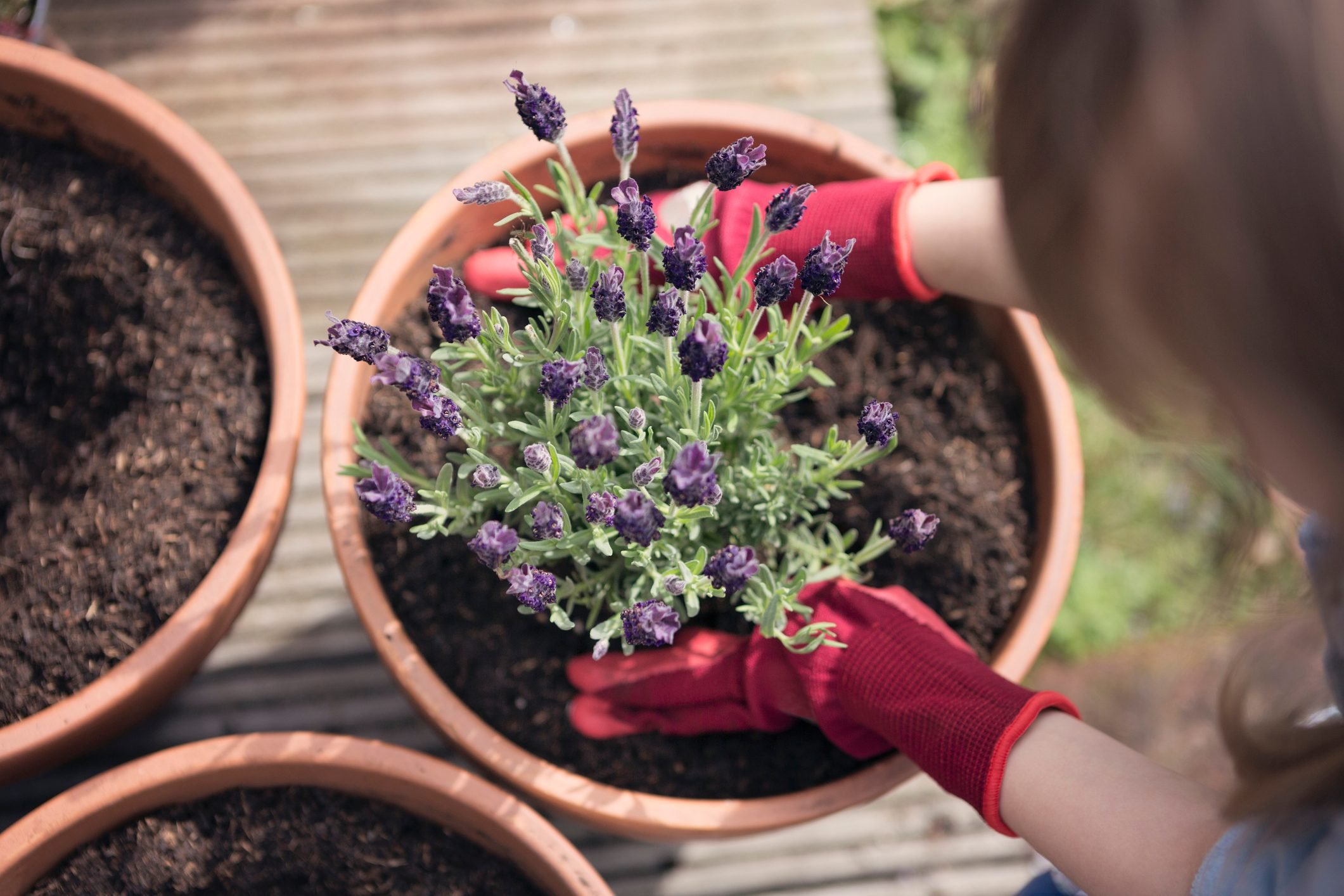There are many good reasons to grow lavender. Bees love it. It smells great. And it will grow in a hot, dry spot in your garden.

How To Grow Lavender

The bees that frequent my garden love my two lavender plants, which grow and flower with abandon. My secret? I give them a light trim in early spring as new growth emerges, then leave them alone. When they flower, bees flock to them.
Types of Lavender
Most gardeners will encounter one of four types:
English lavender
With the botanical name Lavendula angustifolia, this variety is hardy in U.S. Department of Agriculture Plant Hardiness Zones 5 through 9. Named varieties like ‘Hidcote‘ and ‘Munstead‘ are easy to find. ‘Lady,‘ a 1994 All-America Selections winner, produces flowers the first year it’s grown from seed.
Spanish lavender
Lavendula stoechas is only hardy in USDA Zones 8 through 9. Varieties include ‘Madrid Lavish Purple‘ and ‘Primavera.‘
French lavender
French lavender generally refers to Lavendula dentata, hardy in Zones 8 through 11. Look for it by its botanical name to avoid confusion; some Spanish lavender is called French lavender.
Hybrid lavender
Many hybrids carry the botanical name Lavendula x intermedia and are sometimes referred to as Lavadin. They vary in hardiness, but most grow in Zones 5 through 9. Examples of hybrid lavenders include ‘Grosso,‘ ‘Phenomenal‘ and ‘Provence.‘
Where To Plant Lavender

All lavenders have the same basic requirements, derived from their native Mediterranean climate. They like to grow in drier, slightly alkaline soil in full sun.
Plant your lavender in a location where soil drains quickly after rain and strong morning sun quickly dries off dew. Give it room to grow so air can move freely around it. Many varieties grow up to two feet tall and wide.
Can you grow lavender in containers?
Lavenders can be grown in containers as long as you place them in full sun and don’t overwater. It’s is a great option for growing the less hardy Spanish lavender in colder climates.
Always use potting soil that drains quickly, and only water when the soil is dry. Adding sand to your potting soil mix can help with drainage.
Can you grow lavender indoors?
According to Susan Betz, author of Herbal Houseplants: Grow Beautiful Herbs — Indoors, lavender can be grown indoors with “plenty of light, excellent air circulation and space.” She recommends five to six hours of direct sunlight daily from a south-facing window.
Two other tips from Betz: Keep water off the leaves to avoid mold and pest problems, and allow the soil to dry out before watering.
When To Plant Lavender
In most climates, plant lavender in the spring. It won’t mind the hotter days of summer.
How To Plant Lavender
Planting lavender transplants (aka starts)
Most of us will purchase lavender plants instead of starting with seeds. Sizes can vary from tiny starts in three-inch pots to more mature plants in larger containers.
If you have time to wait, smaller plants cost less and will catch up to larger plants within a season or two. Plant the lavender at the same depth it was in its container.
When planting, be sure the soil is well-draining. If it’s not, build a small mound and plant your lavender on top of it. Many growers advise against adding a layer of mulch around lavender because it can retain too much moisture above the roots.
Planting lavender seeds
Bring your patience if growing lavender from seeds. Start seeds indoors six to 10 weeks before your expected last frost date.
Sow the tiny seeds in a container with a seed starting mix, cover lightly, then place the container under grow lights. Keep it covered with a clear plastic lid so the soil doesn’t dry out. It can take 14 to 28 days for the seeds to germinate. Placing the container on a heat mat may speed germination.
Once seedlings emerge with two sets of true leaves, carefully transplant them to individual containers and return them under grow lights. Before transplanting outdoors, harden off your seedlings by taking them outside a few hours a day when temperatures are above freezing. Then gradually increase the time outside each day.
How To Care for Lavender Plants
Watering
Only water lavender when completely dry. Overwatering is a sure way to kill it.
Pruning
Prune most lavenders twice each season, once in early spring as new growth emerges and again after it flowers.
Fertilizing
Generally, fertilizing isn’t necessary. It thrives in poor soils.
How To Dry Lavender
To pick lavender for drying, cut stems of flowers just as the bottom ones begin to open, down to the first set of leaves just after the dew dries in the morning. Tie the stems in small bundles and hang them to dry out of sunlight. In a few weeks, the lavender should be dry enough for potpourri mixes or other craft projects.
Does Lavender Have Superpowers?
According to this TikTok hack, you can use lavender to rid your home of cockroaches!




















